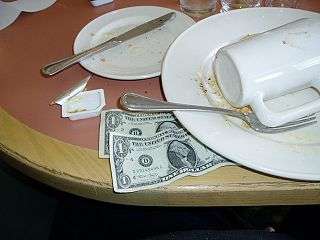Hex
Hex or HEX may refer to:
Computers and technology
Pennsylvania Dutch
Entertainment
Television and film
Hex (comics)
Hex, in comics, may refer to:
It may also refer to:
See also
References

Hex (climbing)
A hex is an item of rock climbing equipment used to protect climbers from injury during a fall. They are intended to be wedged into a crack or other opening in the rock, and do not require a hammer to place. They were developed as an alternative to pitons, which are hammered into cracks and are more prone to damage the rock. Most commonly, a carabiner will be used to join the hex to the climbing rope by means of a loop of webbing, cord or a cable which is part of the hex.
Hexes are a type of nut, a hollow eccentric hexagonal prism with tapered ends, usually threaded with webbing, a swaged cable, or a cord. They are manufactured by several firms, with a range of sizes varying from about 10–100 millimetres (0.4–4 in) wide. Climbers select a range of sizes to use on a specific climb based on the characteristics of the cracks in the rock encountered on that particular climb. Sides may be straight or curved although the functioning principles remain the same no matter which shape is selected; the lack of sharp corners on curved models may make them easier to remove from the rock.

Spoil tip
A spoil tip (also called a spoil bank, boney pile, gob pile, bing, batch, boney dump or pit heap) is a pile built of accumulated spoil - the overburden or other waste rock removed during coal and ore mining. These waste materials are typically composed of shale, as well as smaller quantities of carboniferous sandstone and various other residues. Spoil tips are not formed of slag, but in some areas they are referred to as slag heaps.
The term "spoil" is also used to refer to material removed when digging a foundation, tunnel, or other large excavation. Such material may be ordinary soil and rocks, or may be heavily contaminated with chemical waste, determining how it may be disposed of. Clean spoil may be used for land reclamation.
Spoil is distinct from tailings, which is the processed material that remains after the valuable components have been extracted from ore.
Physical description
Spoil tips may be conical in shape, and can appear as conspicuous features of the landscape, or they may be much flatter and eroded, especially if vegetation has established itself. In Loos-en-Gohelle, in the former mining area of Pas-de-Calais, France, are a series of five, very perfect cones, of which two reach 180 metres (590 ft), surpassing the highest peak in Flanders, Mont Cassel.

Princess Ozma
Princess Ozma is a fictional character from the Land of Oz, created by L. Frank Baum. She appears in every book of the Oz series except the first, The Wonderful Wizard of Oz (1900).
She is the rightful ruler of Oz, and Baum indicated that she would reign in the fairyland forever, being immortal.
Baum described her physical appearance in detail, in The Marvelous Land of Oz: "Her eyes sparkled as two diamonds, and her lips were tinted like a tourmaline. All adown her back floated tresses of ruddy gold, with a slender jeweled circlet confining them at the brow." As originally illustrated by John R. Neill, she fit this description; however, in most subsequent Oz books, Ozma's hair became darker.
The classic books
While still an infant, Ozma, the baby daughter of the former King Pastoria of Oz, was given to the witch Mombi of the North by the Wizard of Oz. Mombi transformed Ozma into a boy and called him "Tip" (short for Tippetarius) in order to prevent the rightful ruler of Oz from ascending to the throne. Thus, Ozma spent her entire childhood with Mombi in the form of the boy Tip, and had no memory of ever having been a girl. During this time, Tip had managed to create Jack Pumpkinhead who was brought to life by Mombi's Powder of Life. In The Marvelous Land of Oz, Glinda the Good Sorceress discovered what had happened and forced Mombi to turn Tip back into Ozma; ever since then, the Princess has possessed the Throne of Oz (although many realms within Oz remained unaware of her authority).

Gratuity
A gratuity (also called a tip) is a sum of money customarily tendered, in addition to the basic price, to certain service sector workers for a service performed or anticipated. Depending on the country or location, it may be customary to tip servers in bars and restaurants, taxi drivers, hair stylists, and so on.
Tips and their amount are a matter of social custom and etiquette, and the custom varies between countries and settings. In some locations tipping is discouraged and considered insulting; while in some other locations tipping is expected from customers. The customary amount of a tip can be a specific range of monetary amounts or a certain percentage of the bill.
In some circumstances, such as with U.S. government workers and more widely with police officers, receiving gratuities (or even offering them) is illegal: they may be regarded as bribery. A fixed percentage service charge is sometimes added to bills in restaurants and similar establishments. Tipping may not be expected when a fee is explicitly charged for the service.
Podcasts:

